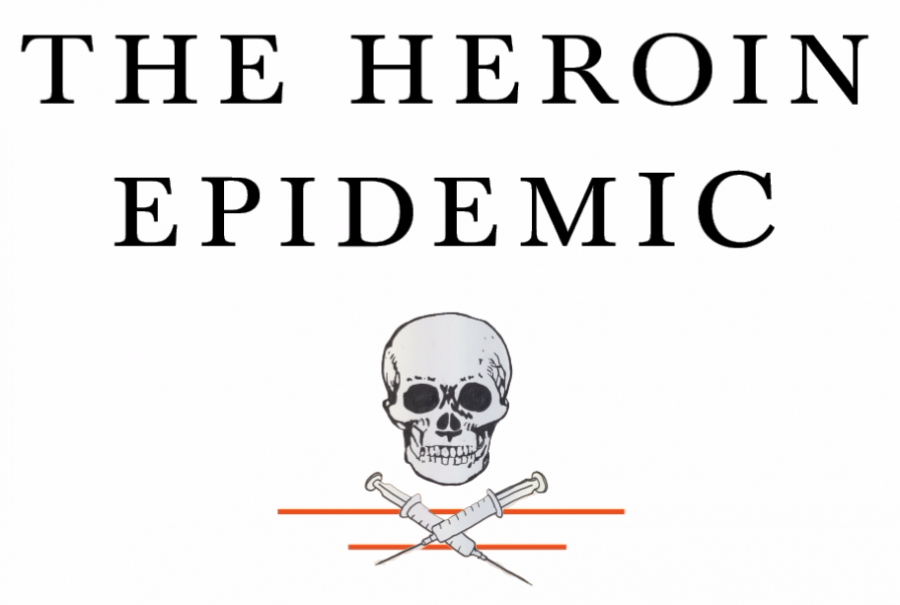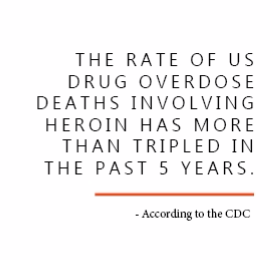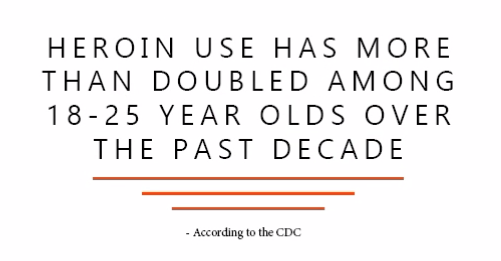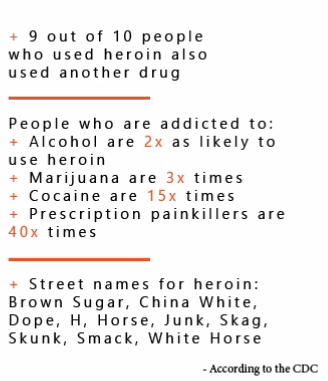Most locals remember the advertisement that came across St. Louis television screens during last year’s Super Bowl. The public service announcement, aired by the NCADA, depicted a heroin user throwing away her hobbies, her schoolwork, her dog, and even her family because of the brutal effects of heroin addiction and the constant desire to get high again. Furthermore, the girl was shown to be a Lafayette High School cheerleader who started experimenting with pills at a party.
2016 was not the first year the NCADA had run an advertisement during this time when the majority of St. Louis televisions are being watched. In 2015, another clip portrayed a mother returning from the grocery store to find her son, a high school athlete, dead due to a heroin overdose. This announcement also highlighted the other common facet of heroin addiction; a myriad of users get their start from prescription pills. For the boy in the NCADA video, he had explored his mother’s medicine cabinet and eventually turned to heroin to fuel his dependence on the drugs.
Heroin is not solely an “adult problem.” Not only does it crawl its way into the lives of teenagers, but it often waits down the roads for adolescents who experiment with pills at parties or get hooked on prescribed medication.
Jack’s story began during his time at Wydown Middle School when he started smoking marijuana. Coming into CHS, Jack began experimenting with other drugs in order to gain approval from upperclassmen. “I wanted to be approved in their eyes, wanted to be one of the cooler kids so that’s why when I was a freshman was when I started using speed — more adderall or ritalin based drugs,” Jack said.
It all became a vortex from there.
Soon after, Jack started using Xanax, a benzo, and oxycontin, an opioid, which set him down the path of opioid dependence.
Jack went to a rehabilitation center his junior year of high school, and was sober for all of first semester senior year. However, his addiction got the best of him. “Second half of senior year is when I got back into it and that’s when I started using opioids pretty heavily” Jack said. “The urge to use inside of me became too big and I couldn’t control it anymore, so I started using again.”
As aforementioned, opioids offer a sense of euphoria and relief from physical and emotional pain, and it is for this reason that they appealed to Jack. The anxiety of college applications during senior year was a stressor that caused him to increasingly turn to the drugs.
“When I started using opioids, they always made me feel a lot more confident. They took the stress off, took the edge off,” Jack said.
Jack slightly experimented with heroin his senior year, but it was not until after high school that his penchant for the opiate escalated. After years of prescription drug use, the expenses grew to be exhaustive, leading Jack to turn to this new source. Jack said, “[Heroin] was a lot cheaper than the pills and I could get the same high off of it for a fifteenth of the price.”
Jack was hooked on heroin. However, he had realized that this was no longer him just using drugs recreationally. He realized he had a disease.
“When the drugs were taken away, all I would think about is drugs and using drugs. When I was using drugs, I’d be able to see how I was never satisfied with how much that high was,” Jack said. “It was just no way to live. I was doing crazy stuff to get the drugs and everything in my life was pretty much stripped from me. I knew potentially I was going to die pretty soon.”
Sarah had the same fears about her son. “When you hear that your child has been using substances that you can’t even pronounce, it’s a very scary feeling because you realize how close they are to death,” she said.
Out of all the drugs he experimented with, Jack is adamant that his run with heroin shook his life the most. “I was impacted most gravely by heroin because when I started using heroin, the people that I associated with changed and a bunch of other drugs that I had always said I’d never do just started getting introduced through heroin.”
Jack has recently completed a 12 month recovery program. Through sponsorship, Alcoholics Anonymous meetings, and a supportive community, he has been able to maintain a clean lifestyle. Nonetheless, the disease of addiction is still a battle he must fight everyday.
Jack is not the only Clayton student who got tangled up with heroin. In fact, Jessica Burnham’s younger brother, John, who attended Clayton during the late 1980s, dealt with a heroin addiction as well.
“They started out pot smoking [during] junior year. And back then, believe it or not, the high school had a smoking lounge right next to the commons. John would go out there because we always knew that’s where the pot smokers were that he’d hang out with, and it progressed from pot smoking that he started experimenting with heroin,” Jessica said.
Progressively using heroin using at parties, John’s addiction to the opiate worsened. Jessica and her family tried to place John in several rehabilitation facilities, but they proved to be unsuccessful in helping John get off his addiction.
After years of dealing with this addiction, John died at age 27 in 1998 from a heroin overdose. He was at a drug house on Maplewood, right off of Big Bend.
“I even have a picture, [my brother] is holding my daughter who was like two back then, from that Sunday, and Monday I was doing the ICU and my ex-husband called and said ‘your brother is dead at the ER at Saint Mary’s,’” Jessica said. “[My brother] had cashed his paycheck that Monday morning, and threw a little laundry in, ate a bowl of cereal with my mom, and was dead by noon.”
Jessica spoke at CHS after John’s death about the dangers of heroin usage and told her personal story. However, she felt that at that time, the late 1990s and early 2000s, the Clayton administration did not respond well.
“It was Clayton. You didn’t wanna talk about that it was county kids doing it,” Jessica said.
Jessica’s own kids attended Webster Groves High School. However, they are not exempt from the St. Louis heroin epidemic either.
John Raimondo, the assistant principal of Webster Groves High School, explained the situation in his community. “We really weren’t hearing much about heroin until about 6 or 7 years ago, and even that was just a small, very small group of kids, who were popular enough and connected enough with other students that it began to spread, almost like an epidemic” Raimondo said.
He has been insistent upon improving the state of the school by involving the community in the fight against drug usage. Raimondo highlights the necessity of providing education in school against drugs, while also emphasizing the responsibility of teachers to report rumours that they overhear regarding students using drugs, so that the school can immediately contact the parent and prevent further damage. Raimondo points out that community contact is essential especially for kids who would be the least expected users.
“It’s across academic achievement, students that we know are using are getting A’s, they are getting B’s. C’s, F’s. I think sometimes when parents see that their kids are doing well in school, they tend to think that [heroin usage] wouldn’t happen, but it does,” Raimondo said. “No parent wants to think, or deal, with the fact that their kid might be using, and a lot of kids are. It is so important for parents to be vigilant and not assume everything is ok, they gotta just keep having those conversations, if we can’t as staff just think they’re just kidding. We’ve got a responsibility to let a parent know that we are hearing things, and the parent has to make their judgement, and if they’re concerned then they take the next step.”
Jack’s experiences, although they took place in Clayton rather than Webster, reflect exactly what Raimondo was referring to.
“I was a pretty good student and I played sports, and people like me weren’t necessarily looked into by the administration,” Jack said.
Although Jack and John both got their start with heroin through experimentation with other people or in parties, another factor often leads teenagers down the same path — mental illness.
The teenage years can be tumultuous times, specifically regarding mental health.
“Sometimes teenagers are struggling and it can be a difficult time in life with all the changes and they can inadvertently look for (opioid abuse) as a way to escape and unfortunately what they don’t realize is that it’s actually gonna make everything worse,” Schwarz said.
However, making it through the teenage years without an addiction is a good sign.
Schwarz affirmed, “if you get through these teenage years and you’re not using this stuff, it’s less likely to get addiction down the road.”








Henry Mohrman • Sep 30, 2017 at 4:12 pm
An excellent piece. I would note that prejudice against all people who suffer from mental illness is understandable, because people who have or have had mental illness exhibit or once exhibited behaviors that are very troublesome for their families, classmates, co-workers and people they meet on the street. In fact, social problems arising from mental illness (including addiction) are often the key to first diagnosis. I strongly support resistance to stigmatizing the mentally ill. The path to that end lies in understanding very troubling behavior as a symptom of possibly serious disease, while realistically recognizing that the symptoms are often hard to tolerate.
I commend the authors for their excellent work and hope they continue to make a contribution as they have with this article.